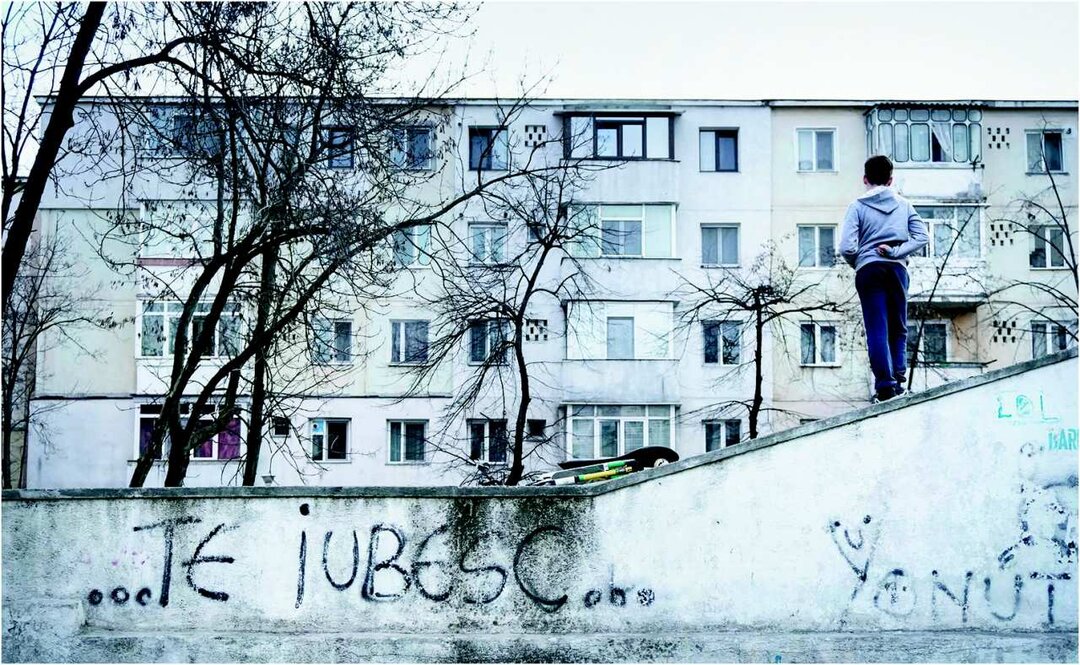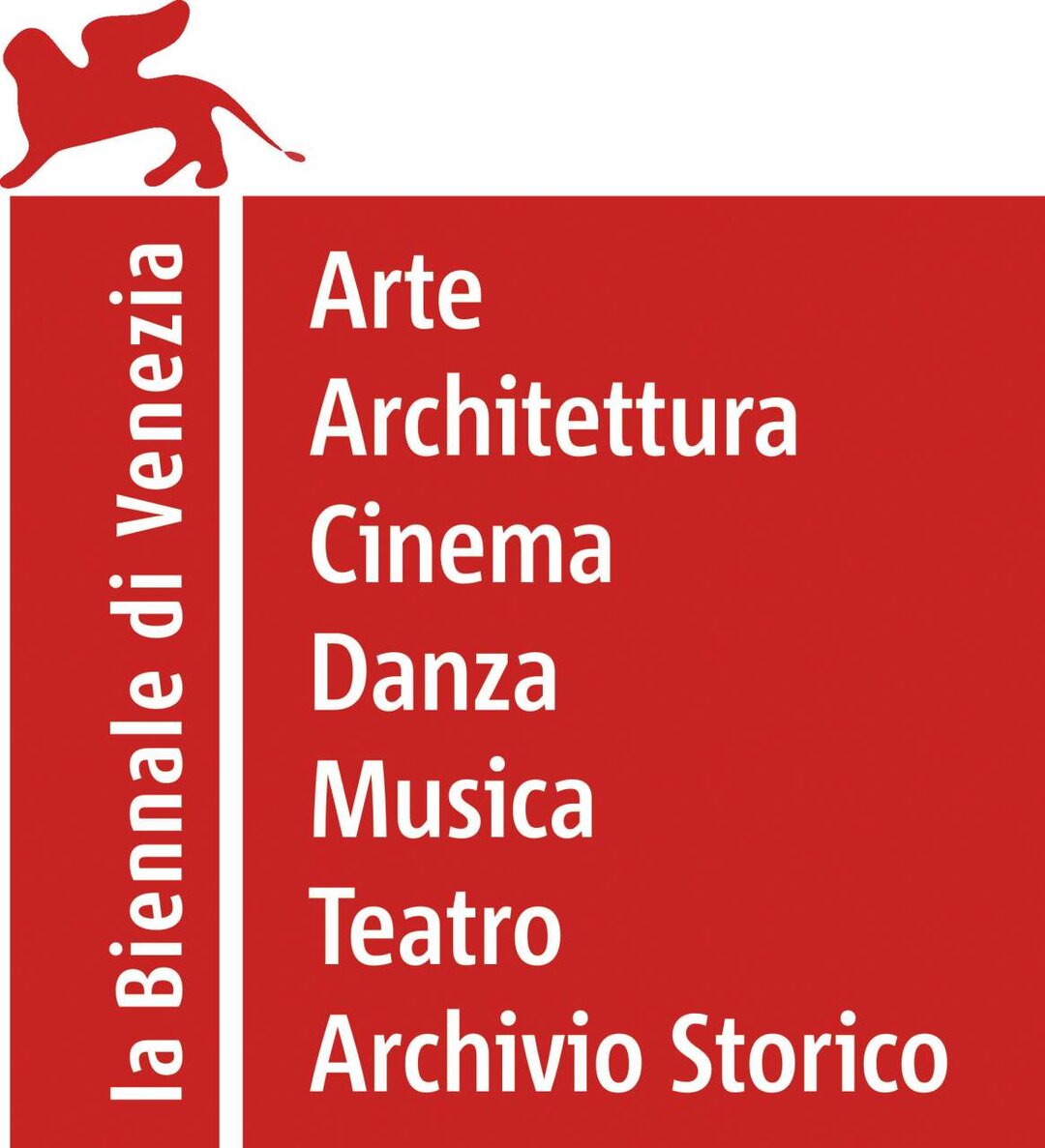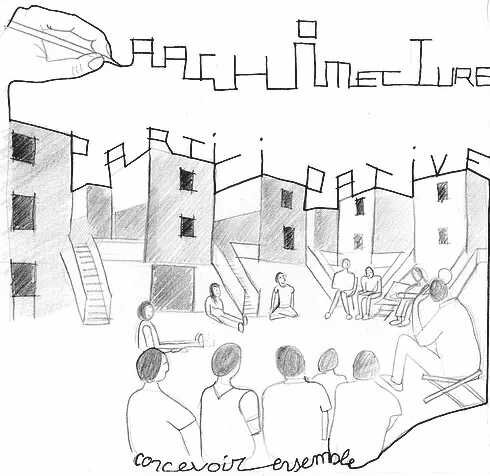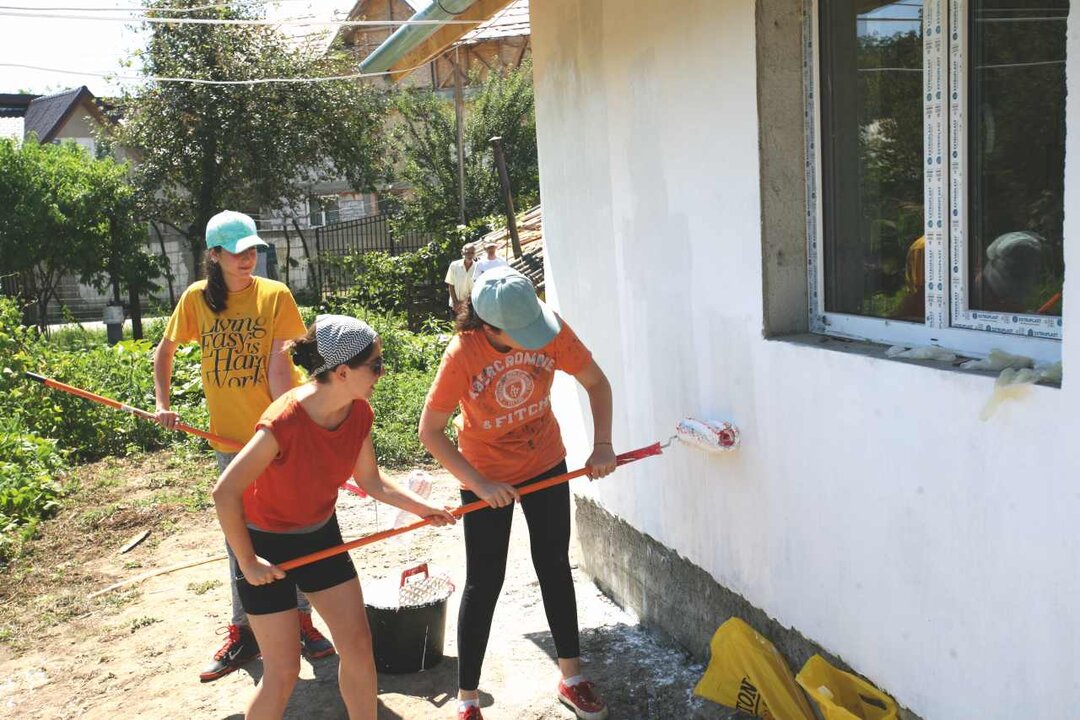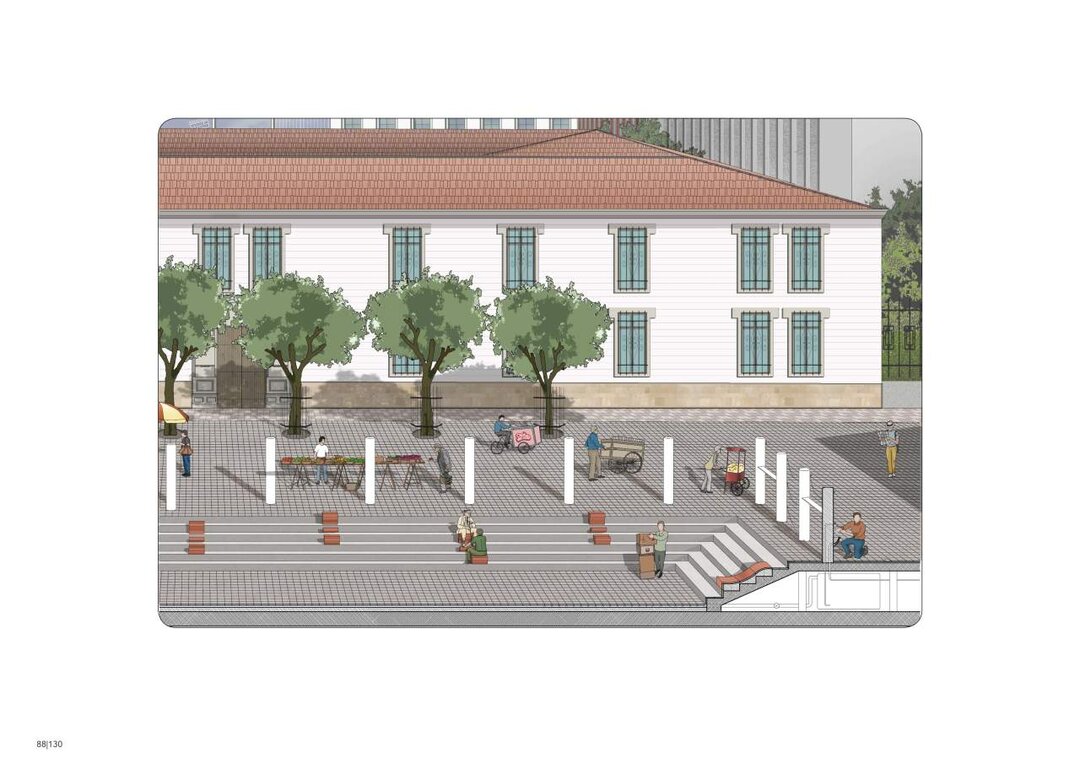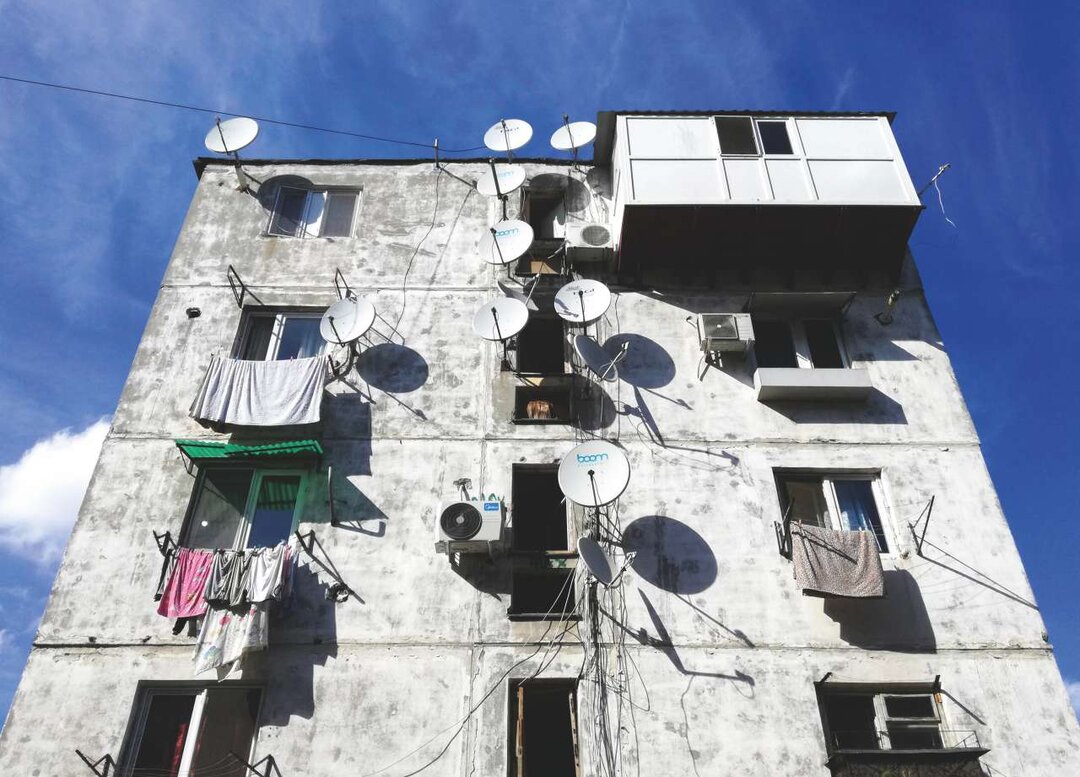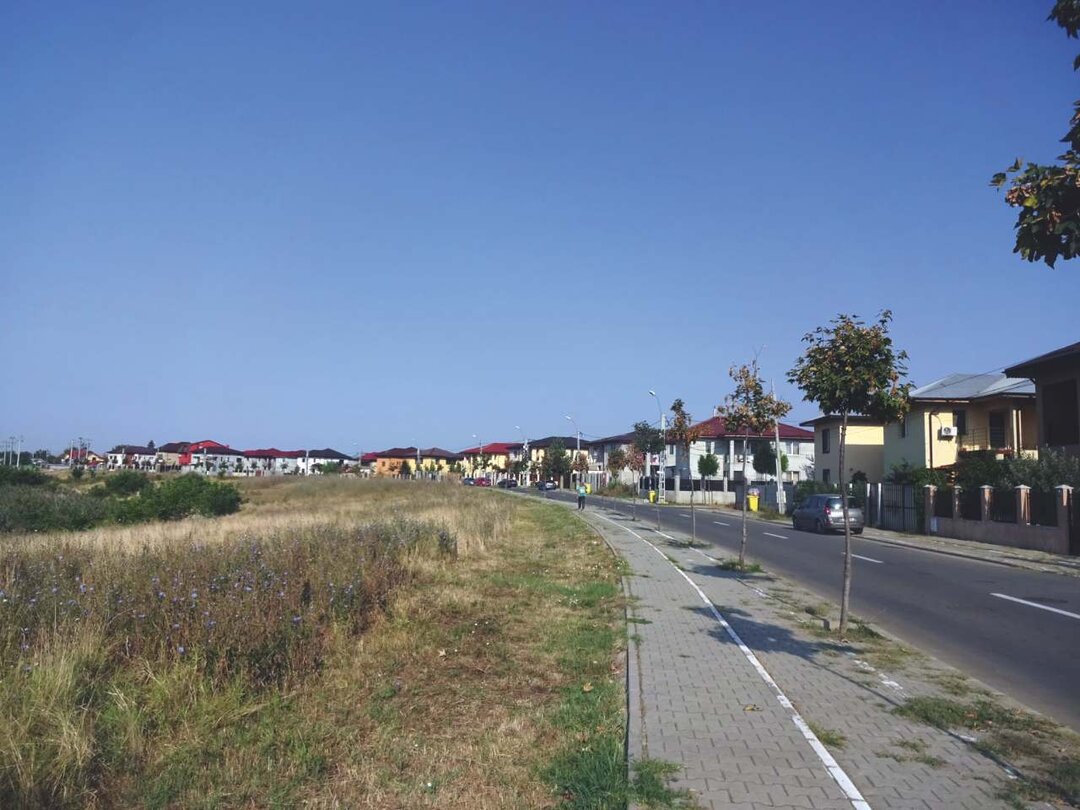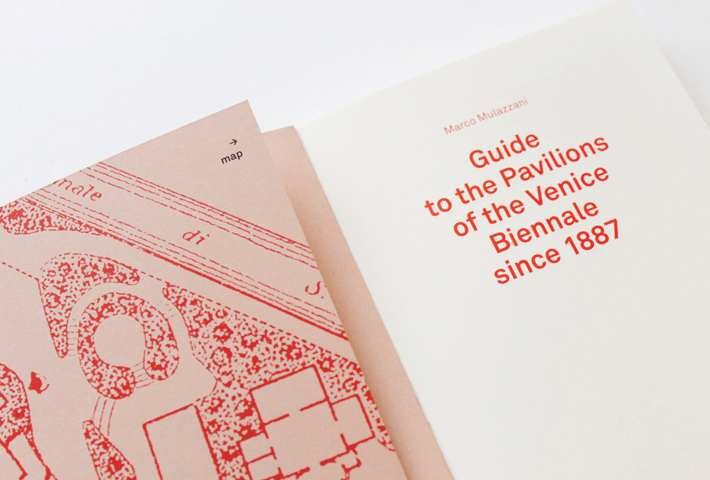
Urban Pedagogy in Bucharest: URBOTECA by ATU
text: Vera MARIN, Daniela CALCIU
ilustrații: Răzvan ZAMFIRA

In Romania, ATU – The Association for Urban Transition is one of the oldest organizations made up of built environment professionals who took a civic commitment grounded on common beliefs about sustainable development. Founded in Bucharest in 2001 (later on, it opened a branch office in Sibiu), by a group of graduates holding master’s degrees from national and foreign universities, all passionate about urban studies and applied research, having associative approaches and convinced of the importance of urban policies for an elaborate preparation of space conversions. From the very beginning, the group sought to bring together actors, interested parties, user groups for urban or rural spaces by means of innovative tools supporting dialogue and negotiation.
As a result, the two fundamental principles lying at the core of the actions and projects undertaken by ATU are: (1) an interdisciplinary approach to urban planning; (2) decision-making processes based on the dialogue between the actors of urban development, given that urban planning and design are regarded as negotiation-based enterprises.
After nearly two decades, the association still focuses on smoothing the sustainable transformation of space while acting as a transmission belt between universality, administration, civil society and investors. However, the proper functioning of the transmission belt also depends on the awareness campaigns aimed at all categories of actors with regard to the benefits of planning, but also, insofar as the inhabitants are concerned, on encouraging and supporting involvement. City planning influences/could influence (improve) our living environment to a greater extent. In our turn, we can influence the way urban planning and design are carried out, whether we are professionals in the field, decision makers, investors, representatives of different organizations and foundations whose objectives are connected to space (everything is connected to space!) or users of the city.
City planning is not just another topic for specialized journals.
City planning is the interaction between technical arguments and political options and, since every human being is a zoon politikon, it concerns us all.
In 2013, following a partnership with two younger associations (Poiana lui Iocan / Iocan’s Glade and Odaia Creativă / The Creative Room) and NUDA - Nordic Urban Design Association in Norway, ATU applied for funding from the NGO Fund Programme (managed by CSDF - The Civil Society Development Foundation) with a view to exploring the possibilities offered by a mobile urban laboratory travelling to various public spaces, and the internet for disseminating information on urban planning and design, actions meant to increase the citizens’ level of information on public programmes and projects and the local planning regulations accompanying a PUG – General Urban Plan or PUZ – Zonal Urban Plan.
This led to the emergence of the URBOTECA project which prompted the creation of a complex website and a mobile laboratory for participatory urbanism in and about Bucharest. URBOTECA is a truck equipped to provide professional knowledge in conventional spaces through interactive tools by involving the citizens in discussions on the urban development processes at different levels. From 2015 until the present, the mobile team registered over 1000 visitors, actors taking part in various events organised by ATU in public spaces throughout the city, while acting as a „guest” facilitator in counselling events created by other organizations in Bucharest and Sibiu.
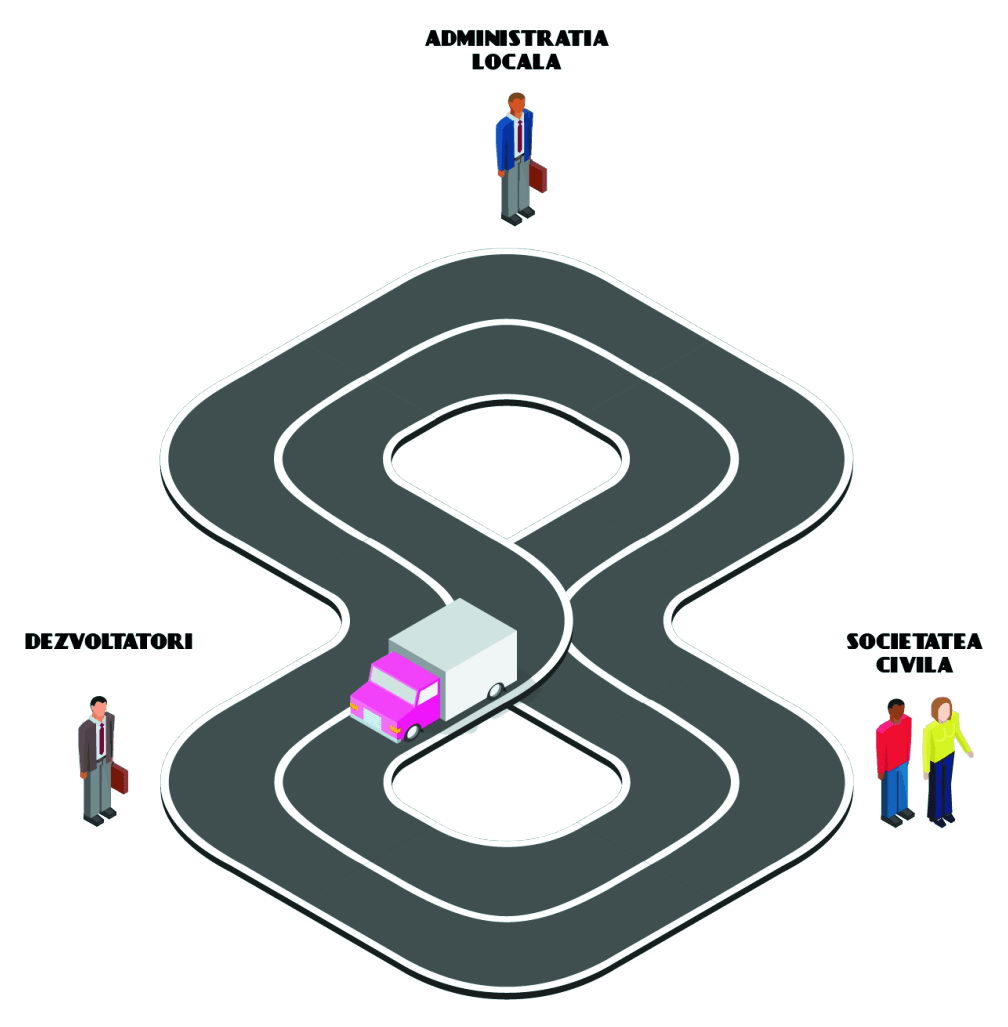
URBOTECA, etymologically defined by the Latin terms „urbs” = city and „theca” (deriving, in its turn, from the Greek word „theke” = box, chest, receptacle), is a neutral place and resource collector, shelter and generator of pedagogical actions meant to raise the level of information and interest in urban themes, aiming at providing encouragement and support for the urban actors seeking to approach the complex topic of participatory urbanism.
Probably the most important asset generated by the urban planning and design tools (local development strategies, sectorial strategies – housing, green spaces, public spaces, mobility, urban planning documentations) is that it provides a framework for dialogue and coordination between urban actors. If the information on these urban planning and design processes were better disseminated, it would appeal to more people, which would ensure a more careful consideration of the way we use our resources and public/common interests. Development can be balanced if the various speakers and interested parties gathered around the negotiating table mutually temper one another. We all saw the outcomes of negotiations taking place only between real estate developers and the local elected representatives. All the urban actors should be present: public authorities and professionals seeing to the public interest, real estate developers and users of urban spaces representing the real estate demand and supply as well as civil society organizations representing the options of the inhabitants concerned with certain social values. The makers and the counsellors should therefore go straight to the point with their information and present truthfully the negotiation margins (what is negotiable and what is not negotiable) to make sure the public understands the important stakes entailed by the proposals in question. However, that does not happen by using panels displaying regulation boards with complicated captions or short newspaper adverts. In participatory planning, transparency and communication are not intended to turn the citizen into an urban planner or a mayor! Urban planners and counsellors preserve their statuses and the local elected decision makers decide and vote for or against the approval of the urban planning documentation. Citizen involvement helps raising awareness for the other actors. As each party pays more attention to his task, the quality of urban planning and design increases.
Public information is more important in terms of quality rather than quantity. Order 2701/2010 imposes certain obligations that can be fulfilled formally, without a real concern for informing and consulting the public. The inhabitants of a neighbourhood (Zonal Urban Plan) or an entire city (General Urban Plan) do not need to know all the details related to the analyses and proposals made by the urban planner. Instead, they would like to know more about the changes taking place if the proposals are implemented.

In addition, URBOTECA also organized a training programme for the preparation of a communication plan accompanying the elaboration of a Protected Built Area Plan (PUZ) in Săcele (Brașov County).
Moreover, the URBOTECA project represented an applied research enterprise: documentation and general communication and participation method analysis paired with specific urban planning and design methods. Due to the interest shown in the topic at international level, besides the experience exchange with the Norwegian partners of the URBOTECA project, we found several foreign associates actively engaged in the subject and we are currently taking part in an international consortium-based project called EURBANITIES within the Erasmus Plus Programme - https://eurbanities.wordpress.com/
In the period June 2017-2020, the URBOTECA team will be part of a research effort within an international project entitled Urban Education Live - http://www.urbedu.live/ - seeking to identify innovative methods for the collaboration between academic or associated professionals and the local communities.
The analyzed examples helped us select a set of instruments that we tested, both online and offline, during the project activities. We chose an attractive design for the mobile interactive workshop, the website and the elaborate „didactic” materials in order to illustrate urban policies as well as urban planning and design processes and tools. In the offline environment, we used role-play, organized public space events, joined the Dâmbovița Smart River platform with a view to connecting the principles we believe in to concrete physical realities. We also collaborated with IT experts specialized in GIS (geo-referentiated information systems) which helped us advocate for the importance of open data and spatialized information for the dissemination of urban planning and design information through presentations held in Bucharest. We used the pedagogical qualities of the project team members in order to create appealing didactic materials for high school students. Based on „The City - A User’s Manual” (Igloo Publishing House, 2015), we organized URBOTECA Club for high schoolers in partnership with „Ion Mincu” University of Architecture and Urbanism and „De-a Arhitectura”/”Let’s Play Architecture” Association.
We came to the conclusion that our premise is correct: the urban planning and design professionals have the ability to facilitate dialogue between urban actors. If a real estate developer or the representative of an organization for heritage or green space protection is centered on a somewhat narrow perspective, it is vital for the professional to assume the role of facilitator; this way, he can identify, through dialogue, several common interests so that projects are more easily implemented and acquire more relevance and motivation for all categories of actors and beneficiaries. On the other hand, the changes benefiting the city are not just the result of the planners’ efforts even though these play a crucial part. Still, the planner would lack challenging design themes if it were not for the inhabitants, the decision makers, the economic agents or those working in non-governmental associations as long-term protectors of the society’s values.
Through the URBOTECA project, we wished to render obvious, to as many people as possible, the extent to which we are dependent on each other in our cities: if the mayor does not want the city hall to initiate urban planning documentations and does not require professional technical expertise, if the inhabitants do not keep trace of the local council decisions concerning public funds wasted on interventions that are not planned and designed by professionals, if planners and architects do not take an intrinsic professional responsibility for the city inhabitants, if the institutions issue purely formal opinions, the existence of planning and design tools is virtually annulled.


